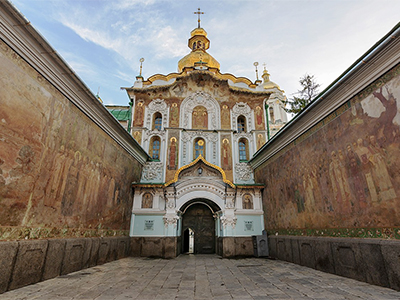 02.05.2018
Cheres – Hutsul’s belt talisman
02.05.2018
Cheres – Hutsul’s belt talismanPicture and manifacture by Yurij Porokh, https://www.facebook.com/yura.porokh https://www.facebook.com/profile.php?id=100006111971815
There are chereses (Hutsul belts) of different sizes: with one buckle called “a little leather band” or “a belt”, and with two buckles – “a big leather band”, and a big belt with six buckles. The belt was made from oxhide or cowhide in one piece and bent in half lengthwise so that the bend was below. It was sewed above, except those spaces where pockets were formed. Opryshoks hid balls and coins therein. The belt had wide from 20 to 45 cm (it was often necessary to cut it under arms).
A very heavy cheres was often born up with even two copper chains thrown over the shoulders. It was clasped with several (from 3 to 5) buckles sewn thereto, decorated with leather embossing, copper chains, hand made buttons («tsitochky“), plaiting with colored leather braids. Rings, hooks and short chains were fastened to the belt, on which “rekityazi” (purses), “protychka” for pipes, flints and other small items hung. A device for unbinding knots called “sugak”, clasp knife and a small hatchet were fastened to the belt with 4-6 buckles. In addition, a powder horn was hung up through the shoulder.
How to wear cheres
A cheres was worn over a shirt and trousers, it did not only protect the internal organs of Hutsuls, but also strengthened the muscles of the middle part of the body by heavy physical work, such as by rafters who floated wood or shepherds who daily overcame kilometers of slopes following after moving flocks. Finally – the cheres served as a wonderful talisman and decoration (like Hutsul zgarda). It was an element of festive clothing, pride and dignity of every Hutsul. It emphasized men’s strength and courage. It was known, Hutsul youth became a real young fellow when his father gave him a cheres for his birthday. Later the belt became a family heirloom; it was handed down from generation to generation as a special attribute.
In the Carpathians, there are other names of this leather belt: popruga, bukuria, bayur. The name of “cheres” comes from ancient Slavic and means a waist. Analogous belts were used by itinerant tchoomaks, who carted salt from Hutsulshchyna and the Carpathians to the Great Ukraine. Probably so this tradition was handed down to Cossacks – a thick, strongly stretched belt protected the Cossack’s body against injuries also served as a bandolier.
Hutsul belt – magic talisman
Since ancient times a belt was considered by the people as a magic talisman, favouring prosperity and success, a symbol of vital energy. A lot of Hutsul flourishes and signs are linked up with a cheres. It is believed a herd drove through the belt by the first pasture will be saved and progenitive. In some regions, for example in Bukovyna, a boy and a girl were belted when they turned three years old. There was also the custom to bury a dead child belted with a red belt, as it defended the baby’s shower from mermaids and allowed reincarnate safely.
Magic of a belt proceeds from its round shape, which correlates a person with cycles of time, that means the power of a belt was the power of time. Magic “cheres” holds the line between Upper (Heaven) world and Lower (Underground) world and symbolizes the meridian surrounding the earth, and closes the space of Hutsul dress. Perhaps that is why Opryshoks were so invincible being belted with the cheres, that they terrified masters to almost the end of XIX century.
Picture and manifacture by Yurij Porokh, https://www.facebook.com/yura.porokh https://www.facebook.com/profile.php?id=100006111971815
-
 27.02.2024
World of pysanka
Embark on a journey into the captivating world of Pysanka, the Ukrainian...
27.02.2024
World of pysanka
Embark on a journey into the captivating world of Pysanka, the Ukrainian...
-
 29.01.2024
Exploring the Treasures of Kyiv’s Lavra Monastery
In the heart of Kyiv lies the venerable Lavra Monastery, a testament...
29.01.2024
Exploring the Treasures of Kyiv’s Lavra Monastery
In the heart of Kyiv lies the venerable Lavra Monastery, a testament...
-
 13.01.2024
Kachanivka, Eden on Earth
Rich in history, it hosted renowned artists, notably poet Taras Shevchenko.
13.01.2024
Kachanivka, Eden on Earth
Rich in history, it hosted renowned artists, notably poet Taras Shevchenko.

